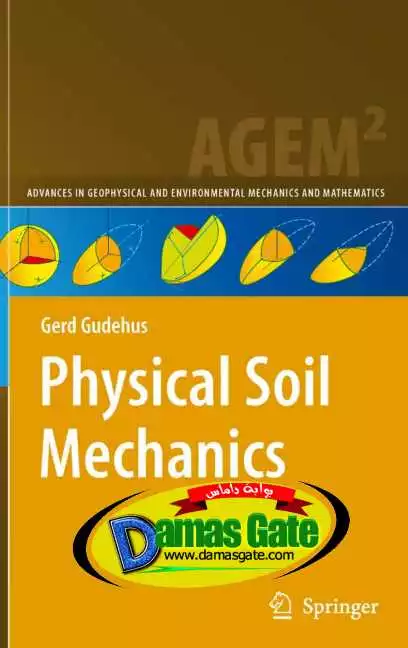Physical Soil Mechanics
INTRODUCTION
In TA ΦYΣIKA, the first ever book on physics, Aristoteles defined the difference
of continuous and granular matter by means of εν ´εργεια, which denoted
action and not energy in a modern sense (this statement was discovered by Th.
Triantafyllidis). Ever since continuum approaches for soils were questioned as
far as these are visibly particulate matter. One may be tempted to simulate
granular aggregates grain by grain with a computer in order to understand
their mechanical properties. On the other hand, engineers are inclined to take
over continuum models from solids to soils, so they work with notions like
stiffness and strength.
It is shown in Sect. 1.1 why both approaches cannot suffice to predict
evolutions with soil. Particulate models have to be simplified, even when using
big computers, to such an extent that they can at best yield qualitative insight.
It is recommended to focus such attempts on attractors, namely state limits,
state cycles and granular phase transitions. For the time being particulate
models are hardly feasible with submicroscopic clay particles due to physicochemical
effects. One is inclined to catch clay instead as continuous matter
like a solid.

Download
http://s18.alxa.net/s18/srvs2/02/001....Mechanics.rar
INTRODUCTION
In TA ΦYΣIKA, the first ever book on physics, Aristoteles defined the difference
of continuous and granular matter by means of εν ´εργεια, which denoted
action and not energy in a modern sense (this statement was discovered by Th.
Triantafyllidis). Ever since continuum approaches for soils were questioned as
far as these are visibly particulate matter. One may be tempted to simulate
granular aggregates grain by grain with a computer in order to understand
their mechanical properties. On the other hand, engineers are inclined to take
over continuum models from solids to soils, so they work with notions like
stiffness and strength.
It is shown in Sect. 1.1 why both approaches cannot suffice to predict
evolutions with soil. Particulate models have to be simplified, even when using
big computers, to such an extent that they can at best yield qualitative insight.
It is recommended to focus such attempts on attractors, namely state limits,
state cycles and granular phase transitions. For the time being particulate
models are hardly feasible with submicroscopic clay particles due to physicochemical
effects. One is inclined to catch clay instead as continuous matter
like a solid.

Download
http://s18.alxa.net/s18/srvs2/02/001....Mechanics.rar